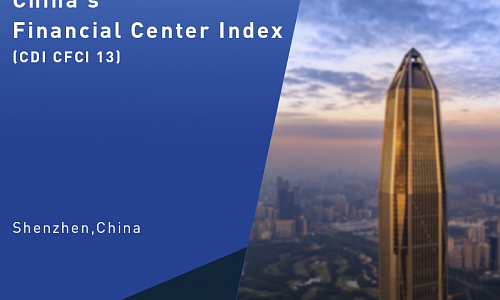Consumption Dips As Growth Hits New Low
 Top leaders’ annual Central Economic Work Conference, held from December 19th to 21st, set countering the ongoing growth downturn as its main 2019 goal for the economy. Leaders pledged to cut taxes and fees “on a greater scale;” to increase the issuance of local government bonds by “a relatively large margin;” and to strike a balance between monetary tightening and easing, to ensure “reasonably ample liquidity.” They promised to continue to address the financing difficulties of private and small companies. Such measures are part of official efforts to “strengthen counter-cyclical policy adjustments,” a statement that refers to government support for boosting economic growth, according to statements by the Xinhua News Agency.
Top leaders’ annual Central Economic Work Conference, held from December 19th to 21st, set countering the ongoing growth downturn as its main 2019 goal for the economy. Leaders pledged to cut taxes and fees “on a greater scale;” to increase the issuance of local government bonds by “a relatively large margin;” and to strike a balance between monetary tightening and easing, to ensure “reasonably ample liquidity.” They promised to continue to address the financing difficulties of private and small companies. Such measures are part of official efforts to “strengthen counter-cyclical policy adjustments,” a statement that refers to government support for boosting economic growth, according to statements by the Xinhua News Agency.
Growth slowed further in November. Industrial output was up 5.4% y/y, down 0.6 pps from Q3, and down 0.7 pps from November 2017, to its lowest level since this cycle of economic downturn began. Fixed asset investment was up 7.7% y/y, comparable to October, driven mostly by state investment, with an increase of 6.7% y/y, up 12.5 pps from July.
Consumption and trade dipped further. Retail sales of consumer goods were up 8.1% y/y in nominal terms in November, down 0.9 pps from Q3. Their real growth rate was 5.8% y/y, down 0.7 pps from Q3. Both exports and imports experienced a major growth slowdown. Exports were up 10.2% y/y, down 9.9 pps from October. Imports rose 7.8% y/y, down 18.5 pps from October. We expect trade to deteriorate further, due to the trade war with the United States.
Prices are declining, likely due to the low money supply. In November, CPI rose 2.2% y/y, down 0.3 pps from October. The ex-factory price of industrial goods rose 2.7% y/y, down 0.6 from October. At the end of November, M2 rose 8% y/y, the same rate as in October. M1 rose 1.5% y/y, down 1.2 pps from October, reaching repeated record lows.
China’s auto sales fell -18% y/y in November, and have been plunging since June, marking the first annual negative growth in three decades. As the world’s largest auto market, 29 million cars were purchased in China last year, compared to 19 million in the second largest car market, the United States. Although peer analysts consider the fall in Chinese car sales the result of the 2018 elimination of the auto sale tax rebate policy, we view the main reasons as economic slowdown, a crowding out from the housing boom and strict regulation of the shadow banking sector for consumer loans. But we also view auto sales decline as a short-term phenomenon, as housing prices have already shown declining trends from earlier overshooting.
CDI and MOTIE Delegation Discuss SEZs

Mr. Zeng Zhen, Director of Urbanization Research Department, introduced development mode and industrial priorities of Shekou area, Luohu District, Futian CBD area, OCT area and Nanshan high-tech area. The delegation from MOTIE introduced seven free economic zones in Korea. Both sides shared development mode of special economic zones (SEZs) in China and South Korea.
CDI Experts Give SEZ Training to Cuban Officials
 From November 19 to 25, Dr. Qu Jian, Vice President of CDI, and Dr. Liu Rongxin, General Director of the Department of Regional Development Planning at CDI, gave training to officials at Mariel Special Economic Zone (SEZ) in Cuba. The training program included SEZ-related development course, laws and regulations, regional planning, investment and financing, and operation management. Mariel SEZ, the first one in Cuba, was launched in 2013. Although it was well positioned as a critical hub in the Caribbean region, it was faced with difficulties of investment attraction and operation management.
From November 19 to 25, Dr. Qu Jian, Vice President of CDI, and Dr. Liu Rongxin, General Director of the Department of Regional Development Planning at CDI, gave training to officials at Mariel Special Economic Zone (SEZ) in Cuba. The training program included SEZ-related development course, laws and regulations, regional planning, investment and financing, and operation management. Mariel SEZ, the first one in Cuba, was launched in 2013. Although it was well positioned as a critical hub in the Caribbean region, it was faced with difficulties of investment attraction and operation management.
China's Central Bank Weighing More Stimulus to Support Economy
The Chinese central bank is aiming to relax its informal deposit rate guidance for commercial lenders, allowing more interest rate flexibility and higher loan issuance to Chinese borrowers.
Kristian Rouz - The People's Bank of China (PBOC) is set to loosen its deposit rate ceiling for commercial lenders in an attempt to inject additional money liquidity into the economy. The move comes amid elevated trade tensions with the US, as Beijing seeks to boost domestic consumption by making it the key driver of the economy.
The Chinese central bank's planned move will relax the informal rules it sets for commercial banks mandating the amount of interest the lenders could repay on the amount borrowed. This will allow for more commercial interest rate flexibility, meaning banks will be able to boost their credit issuance at likely more affordable rates.
This comes as the PBOC is continuing its efforts to crackdown on ‘shadow lending', which has been rife in China since the recovery from the global economic crisis started back in 2009. By supporting official bank lending - which takes place within the central bank's regulatory framework - the PBOC is hoping to stave off borrowers' appetite for 'shadow lending' schemes.
The most recent changes in PBOC policies come after the National People's Congress appointed economist Yi Gang as the central bank's new Governor. Yi holds a PhD in economics from the University of Illinois, and the Chinese government expects his expertise to help remodel the nation's financial system to mirror that of the US by making it more reliant on the services sector rather than export-oriented manufacturing.
The looming change in PBOC policies has become particularly urgent in the wake of the recent developments in China's international trade. US President Donald Trump's push for ‘fair and reciprocal' trade might cause disruptions to China's exports - not only to the US, but to America's largest trading partners as well.
This, in turn, could undermine the influx of investment into China. While the Chinese government is seeking to reassure investors by touting a greater openness of its economy, the PBOC is preparing a blueprint for a greater-scale monetary stimulus, which could finance Beijing's ambitious economic overhaul.
Moreover, Chinese officials have recently urged increased government investment in the domestic economy rather than foreign reserves. The PBOC recommended diverting funds for economic development at home from US Treasury bonds.
"We are a low-income country, but we are a high wealth country. We should make better use of the capital. Rather than investing in US government debt, it's better to invest in some real assets," member of the PBOC Monetary Policy Committee (MPC) Fan Gang said.
Fan also acknowledged that China's high debt level - which exceeds some 200 percent of its GDP and contains higher risks associated with provincial government debt - might pose a challenge to the nation's financial stability. The PBOC urged prompt deleveraging, where possible, and the additional central bank stimulus might help such an endeavor.
"This problem is serious and we need to clean house. We need to contain this financial risk, but it will not cause a financial crisis," he said.
Fan said despite China having a safety cushion amounting to 44 percent of its GDP in the form of savings and foreign reserves, it might not be enough to cover all liabilities in the event of a global economic meltdown or a serious challenge to foreign trade.
However, Chinese officials said it is unlikely that the trade dispute with the US will escalate toward an economic catastrophe.
"On whether China will reduce its foreign exchange reserves, how policymakers think, I don't know. I personally believe this possibility is very small," Zhang said.
While China is the largest overseas holder of US government debt - with its Treasury holdings standing at $1.17 trln as of this past January - the Chinese finance ministry ruled out a sell-off in US Treasuries, stressing its commitment to international long-term bond investment rules.
Additionally, as the US Federal Reserve has some $4.5 trln in its bloated balance sheet, the US central bank could absorb any significant sell-off of its bonds if necessary, which could impair China's reputation as a reliable creditor.
While Beijing is hardly interested in rocking the boat, the PBOC's quiet monetary stimulus and a broader economic reform are expected to alleviate the risks the Chinese economy will face within several years.
On Financial Market Infrastructures to Support Financial Innovation
Information
 Safe, efficient and open financial market infrastructures lay foundation for RMB internationalization. CDI invited Mr. Patrick Hess, Senior Market Infrastructure Expert, Directorate General Market Infrastructure and Payments, European Central Bank to elaborate on definition and types of financial market infrastructures, Chinese FMIs and aspects of RMB internationalization, relevance of Chinese FMIs for RMB internationalization, and potential cooperation between Europe and China.
Safe, efficient and open financial market infrastructures lay foundation for RMB internationalization. CDI invited Mr. Patrick Hess, Senior Market Infrastructure Expert, Directorate General Market Infrastructure and Payments, European Central Bank to elaborate on definition and types of financial market infrastructures, Chinese FMIs and aspects of RMB internationalization, relevance of Chinese FMIs for RMB internationalization, and potential cooperation between Europe and China.
Date: September 11, 2018
Venue: Room 101, CDI Mansion, Shenzhen
Host: CDI
Theme: On Financial Market Infrastructures to Support Financial Innovation
Surplus to the US Even Widened
 Growth was stable but a bit lower in October. Industrial output was up 5.9% y/y, up only by 0.1 pps from September. Investment rose 8% y/y, having been rising for three consecutive months, and up 5 pps compared to the lowest rate in July. State investment is accelerated to counteract other negative growth factors.
Growth was stable but a bit lower in October. Industrial output was up 5.9% y/y, up only by 0.1 pps from September. Investment rose 8% y/y, having been rising for three consecutive months, and up 5 pps compared to the lowest rate in July. State investment is accelerated to counteract other negative growth factors.
Retail sales of consumer goods were up 8.6% y/y in nominal terms in October, down 0.4 pps from Q3, only up 0.1 pps from the lowest rate in May. Its real growth rate was 6.5% y/y, down 0.9 pps from Q3, reaching the lowest rate since this cycle of economic slowdown.
Despite of trade war, trade is booming. Exports rose 20.1% y/y, up 9.8 pps from Q3. Imports rose 26.3% y/y, up 7.3 pps from Q3. Trade surplus to the US widened in particular, possibly thanks to the strong dollar, reached 218.1 billion yuan in October, and rose 23.9% y/y.
Prices growth is expected to go downwards with the current non-loosened monetary policy. In October, CPI rose 2.5% y/y, same rate as September. The ex-factory price index of industrial outputs and PPI grew 3.3% and 4% y/y, down 0.3 and 0.2 pps from September respectively.
In the end of October, M2 was up 8% y/y, down 0.3 pps from September. M1 rose 2.7% y/y, down 1.3 pps from September, reaching new low since this downturn cycle, having already been lower than the bottom in last cycle in March 2015. However, the trend is still fast declining. Central bank has the incentive not to lower interest rate to keep RMB afloat.
Infrastructure investment growth rate had its first rise in October this year. In particular, it rose 3.7% y/y, up 0.4 pps from September. This has been shown in recent intensive announcements for new openings and approvals of mega-projects, such as speed railway. Chinese government’s relative low public debt at 47.6% of GDP with its international peers made such investment possible and sustainable for a while. Stronger monitoring by central government over local government spending may improve infrastructure investment efficiency. The low central government debt also makes tax reduction possible, as it has announced on November 1st to reduce value added tax rate for private firms, SMEs, and high-tech companies. Both infrastructure investment and tax cut will generate future growth, and the former will have a boost to the economy even in a short term.
Global Financial Centres Index 23 - Overall Increase in Confidence For The Leading Centres
Today Z/Yen Partners and the China Development Institute (CDI) publish the twenty-third Global Financial Centres Index (GFCI 23). We are holding the launch Conference in Qingdao. The GFCI rates 96 financial centres. The top ten are shown to the right. Full details are available here. The main headlines are shown below.
There is an overall increase in confidence for the leading centres. Signs of a bias towards stronger and more established centres are evident with the top 25 centres all rising in the ratings. Ratings fell for all of the lowest 50 centres.
London and New York remain at the top of the rankings and the gap between them in ratings closed to one point on a scale of 1,000. Hong Kong retains third place. London’s rating rose less than the other four top centres.
There is now less than 50 points between the top five centres. San Francisco and Shenzhen moved into the top ten, replacing Beijing and Zurich.
Western European financial centres remain volatile. The top five centres rose in the ratings. Most of the lower placed centres lost ground. Hamburg, Munich, Monaco, and Madrid, rose strongly in the ranks, with other improvements for Paris, Jersey, Edinburgh, and Lisbon. Hamburg in particular rose 38 places in the ranks.
In the Asia/Pacific region, the leading centres improved their ratings. There were significant rises in the ranks for Qingdao, Bangkok, Kuala Lumpur, and Busan. Tianjin and New Delhi are new entrants to the GFCI.
North American centres generally achieved improved ratings and improved their ranks accordingly.This was a reversal from GFCI 22. The exception was Washington DC, which dropped 20 places in the rankings. Montreal also dropped by one place (although its rating was 22 higher than in GFCI 22).
All centres in Eastern Europe and Central Asia suffered a fall in their ratings. However, Cyprus, Istanbul, and Moscow rose in the ranks. Tallinn and Riga both fell over 30 places in the ranks. Astana and Baku are new entrants to the GFCI.
In the Middle East and Africa, only Dubai and Abu Dhabi increased their ratings. Mauritius, Riyadh, and Casablanca improved their ranking despite falls in their ratings.
All centres in Latin America and the Caribbean fell in the GFCI ratings except for the Cayman Islands. Despite the fall in the ratings, six centres rose in the ranks with the Bahamas leading the way rising 22 places. The Cayman Islands are now the leading centre in the region.
European ‘island’ centres fell back after rising in GFCI 22. The British Crown Dependencies of Jersey, Guernsey, and the Isle of Man all fell in the ratings.
Mark Yeandle, Director of Z/Yen Partners and the author of the GFCI, said "All the top centres have risen in the ratings. London remains on top despite Brexit concerns but rose less than any other centre in the top fifteen.”
Professor Fan Gang, President of the CDI, said "Eight Chinese financial centres have entered GFCI and are continuously doing well. As an economist, I am very proud of achievements of China’s economy. However, it is crucial to keep a realistic and sober mind amidst the chorus of praise.”
GFCI 23 Top Ten Centres
- London 794
- New York 793
- Hong Kong 781
- Singapore 765
- Tokyo 749
- Shanghai 741
- Toronto 728
- San Francisco 726
- Sydney 724
- Boston 722
London still on top, but North American, Asian markets close in on financial center rankings
inancial service professionals are increasingly confident in the world's leading financial centers, with a bias toward stronger and more established cities, finds the Global Financial Centres index.
London and New York remained on top of the rankings, which scored cities according to assessments collected from 2,300 financial services professionals responding to an online questionnaire. Hong Kong, Singapore and Tokyo also retained their places in the top five.
The 23rd edition of the index, produced by Z/Yen Partners and the China Development Institute, includes 96 centers, up from 92 in the 22nd edition. The firms researched 110 centers, using 103 instrumental factors — quantitative measures provided by third parties including the World Bank. These factors were then combined with respondent assessments and centers were given a score.
London scored 794, up from 780 last year. The remainder of the top five saw more marked increases in their scores: New York closed in on London, with its score rising to 793 from 756; Hong Kong's score grew to 781 from 744; Singapore scored 765 vs. 742; and Tokyo scored 749 up from 725 in the 2017 index.
There were two new top 10 entrants, with San Francisco at eighth place, up from 17th, and Boston rising to 10th from 19th last year. Rounding out the top 10 were Beijing and Toronto, which stayed in sixth and seventh places, respectively, and Sydney, which dropped to ninth from eight last year. Zurich fell to 16th place from ninth this year, while Beijing dropped one spot to 11th.
Centers in North America generally achieved improved ratings and ranks, showed the index.
"All the top centers have risen in the ratings," said Mark Yeandle, director of Z/Yen Partners and author of the report accompanying the index, in a news release. "London remains on top despite Brexit concerns but rose less than any other center in the top 15."
New era for nation’s housing market as focus changes
The era of "strong demand" in China's housing market is over, with "imbalanced and inadequate" development becoming the industry's top problem, said Yu Liang, chairman of property developer Vanke Group.
Yu made the remarks on Tuesday during a press briefing in Shenzhen, South China's Guangdong Province to explain Vanke's 2017 performance, which was announced on Monday.
Vanke said revenue in 2017 reached 242.9 billion yuan ($38.5 billion), up by 1 percent year-on-year. Net profit reached 28.1 billion yuan, with a yearly increase of 33.4 percent, the company said at the conference.
"In the past 20 years, the unprecedented wave of urbanization in China generated strong demand for commercial residential houses. So we built a lot in a bid to meet that demand," Yu said.
"But things have changed. Many urban housing units have been sold but lie vacant; meanwhile, young newcomers may lack decent housing. This represents the 'imbalanced' and 'inadequate' supply problems in the sector," Yu said.
According to Yu, these emerging problems have driven Vanke to shift its market strategy in 2018. The company will expand its rental businesses in urban and rural areas, as well as develop support services and facilities associated with those units, to ensure that "everyone can have a place to live".
Yu pointed out as an economy matures, housing-related support services such as community facilities, property management or elder care services would be valued much more.
Song Ding, a research fellow at the China Development Institute, told the Global Times on Tuesday that Yu's comment reflected the policy of curbing speculation and other regulatory policies in the industry promoted by the Chinese government in the past year.
Song said Vanke's plans showed in a practical manner that "houses are for people to live instead of investment or other purposes," which will promote a sounder, more balanced real estate market in the long term.
Other Chinese real estate developers are also making similar strategy shifts.
For example, Country Garden said that 3,000 long-term property leasing apartments have already under construction in major Chinese cities in 2017.
Sunac, another property developer, is seeking for an expansion of its businesses. The company bought 91 percent of 13 tourism projects in July from conglomerate Dalian Wanda Group for $6.5 billion, according to Reuters.
Brexit and the City: Tracking the fortunes of London's financial districts
LONDON, March 28 (Reuters) - Is London’s position as the largest international centre of finance slipping as a result of Brexit?
London has been a critical artery for the flow of money around the world for centuries. The financial services sector accounts for about 12 percent of Britain’s economic output, employs about 1.1 million people and pays more taxes than any other industry.
From its traditional City heartland to the brash Canary Wharf skyscrapers and plush Mayfair townhouses, London represents one of the greatest concentrations of financial wealth on earth.
Its only rival, New York, is centred on American markets, while London has more banks than any other hub, dominates markets such as global foreign exchange and commercial insurance and is home to international bond trading and fund management.
But about a third of the transactions on its exchanges and in its trading rooms involve clients in the European Union. These may be jeopardised after Brexit unless Britain manages to maintain similar levels of access to the trading bloc.
The French finance minister predicts Paris will overtake London as Europe’s most important financial centre in a few years, although supporters of leaving the EU say Britain will benefit over the long term by setting its own rules.
London remained top of the rankings in the annual Global Financial Centres Index released this week by Z/Yen Partners and the China Development Institute, although the gap between it and New York in second closed to one point on a scale of 1,000 and its rating rose by less than the other four top centres.
Reuters is publishing its second Brexit tracker, monitoring six indicators to help assess the City’s fortunes, taking a regular check on its pulse through public transport usage, bar and restaurant openings, commercial property prices and jobs.
Almost a year before Britain is due to leave the EU, the tracker suggests London’s financial districts have been held back, but there is no evidence of a mass exodus.
“London has not come close to taking a mortal blow or anything like it ... The increasing uncertainty though over London’s future has led to a stall in its growth,” Michael Mainelli, Executive Chairman of Z/Yen, told Reuters.
Jobs leaving London?
Firms employing the bulk of UK-based workers in international finance told Reuters that the number of finance jobs they plan to shift out of Britain or create overseas by March 2019 due to Brexit has dropped to 5,000, half the figure six months ago.
This comes amid more conciliatory signals from British Prime Minister Theresa May, while progress in talks with the EU have prompted some companies to delay large staff moves.
The findings suggest that the first wave of job losses may be at the lower end of initial industry estimates, meaning London will keep its place as the continent’s top finance centre in the short term.
London’s finance industry should emerge largely unscathed from Brexit even if thousands of jobs move, the City of London’s political leader Catherine McGuinness says, adding that it could take years to feel the full impact of Brexit.
“All the signs are that companies are just making plans to move the minimum necessary,” she told Reuters, adding “just because you can’t see a massive change suddenly happening you can’t assume everything is okay.”
Hiring numbers
The number of available jobs in London’s financial services industry fell the most in six years in 2017, said recruitment agency Morgan McKinley which hires staff in finance.
It bases its number on the overall volume of mandates it receives to find jobs and applies a multiplier based on its market share of London’s finance industry.
The recruiter found 82,147 new financial services jobs were created last year, a 12.45 percent drop on a year earlier. This is the lowest number of jobs available since 2011.
“Brexit has stalled the growth of jobs. Companies are reluctant to make major investment decisions at the moment,” said Hakan Enver, operations director at Morgan McKinley Financial Services, which carried out the survey.
Commercial property
Reuters obtained property data from Savills and Knight Frank, two of the biggest real estate firms in Britain. Savills calculates the value from all-known property deals within the City of London area.
Savills says commercial property prices in the City of London are now at the highest level since the third quarter of 2016, three months after the Brexit vote, driven by a surge in office purchasing and leasing in the final quarter of 2017.
The price of renting real estate in the City of London district rose 9.5 percent in the last three months of the year, climbing to 78 pounds ($107) per square foot, from 71.21 pounds in the third quarter of 2017, Savills says.
“There has been a lot of exaggeration about the demise of the City,” Philip Pearce, a director at Savills, said. “The expectation post-Brexit was the world would start draining away from the City, whereas the reverse has happened.”
In Canary Wharf, prices were also unchanged in 2017 compared with the year before, Knight Frank, whose data comes from landlords, developers and agents, says. Going Underground Some 400,000 journeys are recorded every day at the three main underground stations that serve the City and Canary Wharf.
Reuters filed Freedom of Information Act requests to Transport for London, to get this data which shows that the number of people using Bank and Monument stations is on course for its first fall since the final year of the financial crisis.
Travellers going in and out of Bank and Monument fell by a fifth in 2017 compared with 2016, the data shows. This follows an annual increase each year since 2009.
In Canary Wharf, the number of people using the station fell by 10 percent, while the number of people using London’s underground network fell about 2 percent
overall last year.
Mike Brown, the commissioner for Transport for London, said it is struggling to explain the drop in passenger numbers.
“Is it an element of economic uncertainty? Is it a handful of jobs here or there maybe not being there this year, compared to last year, or is it actually just that people are working from home?” he said. “It is a bit difficult to be categoric.”
Canary Wharf’s owners did not respond to requests for comment.
City Airport
The number of passengers using London City Airport, a popular gateway for finance executives, fell for the first time since the final year of the 2007-2009 global financial crisis in 2017, its publicly available figures show.
The number of passengers at the airport, close to Canary Wharf’s financial district, fell 0.2 percent last year. That compares with an average annual 8.8 percent increase in the previous six years.
London City Airport said the stagnating numbers were partly caused by some airlines cutting routes.
“We are very confident about the long term future prospect of London City Airport and aviation in the UK, with passenger growth expected to resume in 2018,” a spokesman said.
Bar and restaurant openings Reuters filed a Freedom of Information Act request to the City of London Corporation to find the number of new premises which have applied for licences to sell alcohol and licence renewals.
The number of venues, such as bars and restaurants, with licences to sell alcohol in the City of London in 2017 fell 1.6 percent, data from the municipal local authority shows.
The number of venues applying for new licenses was flat compared with 2016, the data shows, although the City of London Corporation said such fluctuations were normal.
“As some establishments close and others open, it is inevitable that licensing renewal figures will fall and rise but overall, the number of licensed premises in the City has steadily increased in recent years,” it said in a statement.
($1 = 0.7278 pounds)










